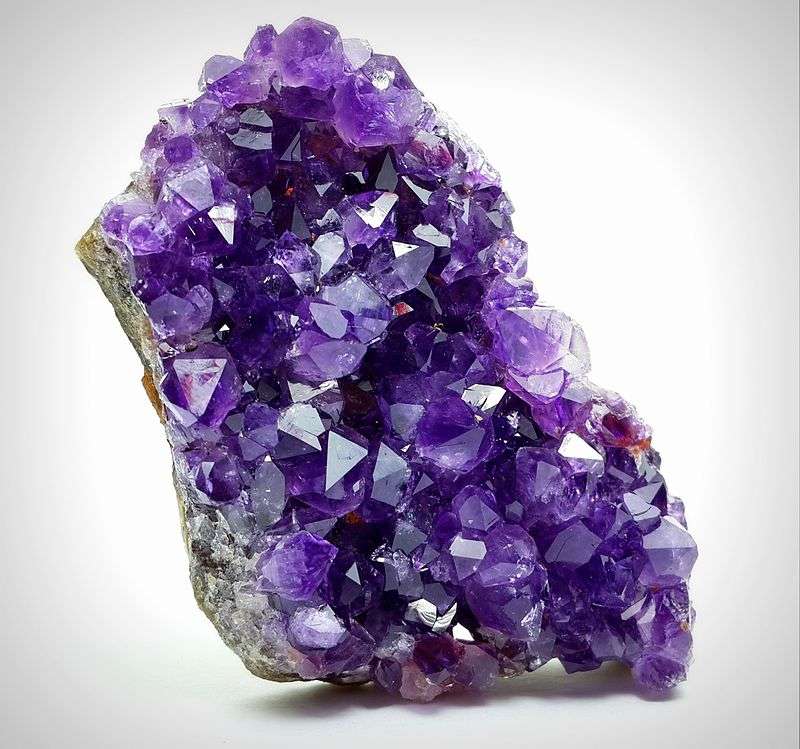
Appearance
Usually found in purple tones, amethyst is a translucent type of quartz. The purplish zones alternate with patches of white or grayish, and there is also some translucent to opaque amethyst present. In opaque, translucent, and transparent types, color zonation can be very apparent.

Geographical Distribution
Amethyst of superior quality can be discovered in Brazil, Uruguay, Siberia, Sri Lanka, and the Far East. “Deep Siberian” is the optimal grade, with a primary purple hue of about 75–80%, along with 15-20% blue and red secondary hues depending on the light source.
History
Derived from the Greek word amethystos, amethyst literally means ‘a treatment against drunkenness’. The purple hue of the gem, which has a red wine-like appearance, is assumed to be the source of this name. The majority of amethyst was mined in Russia up to the 19th century.
Metaphysical Properties
In addition to its spiritual qualities, amethyst is prized for its metaphysical qualities and capacity for physical healing. It is said to relieve stress and headaches, help with anxiety and depression, cleanse the mind, remove harmful thoughts, and promote healthy sleep habits.
Chemical Composition
Amethyst is a type of quartz that shares the same chemical formula, SiO2, as quartz. This indicates that the components of amethyst are silicon and oxygen, with each silicon atom having a tetrahedral connection with four oxygen atoms.
Uses
- Beads, tumbling stones, cabochons, faceted stones, and numerous more items for jewelry and decorative purposes are produced using it.
- Amethyst is not cleavable and has a Mohs hardness of 7. Because of this, it is strong enough to be used in pendants, earrings, bracelets, rings, and other jewelry.
Table





